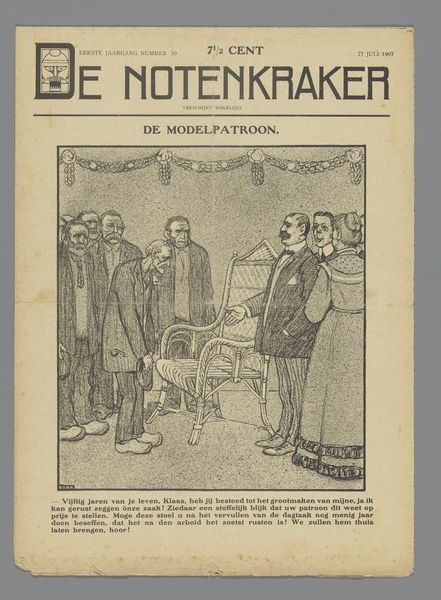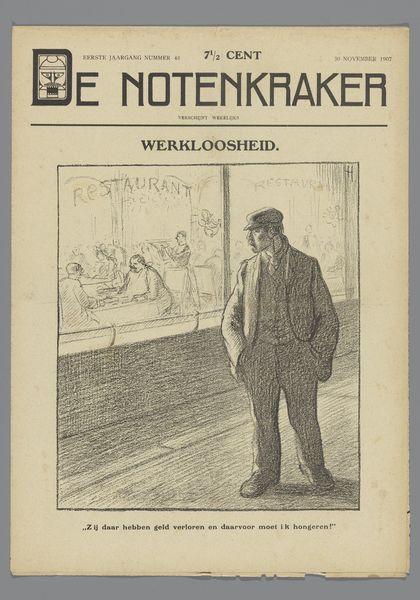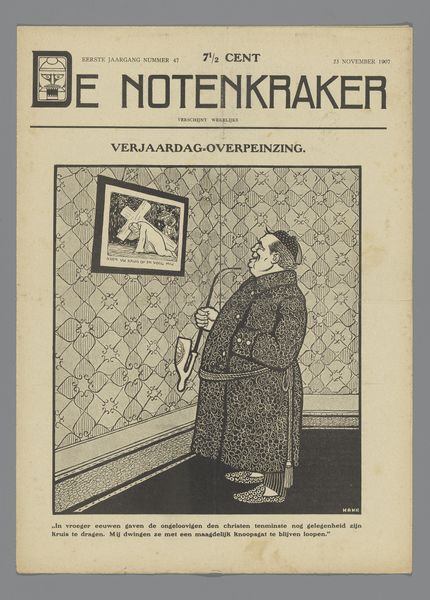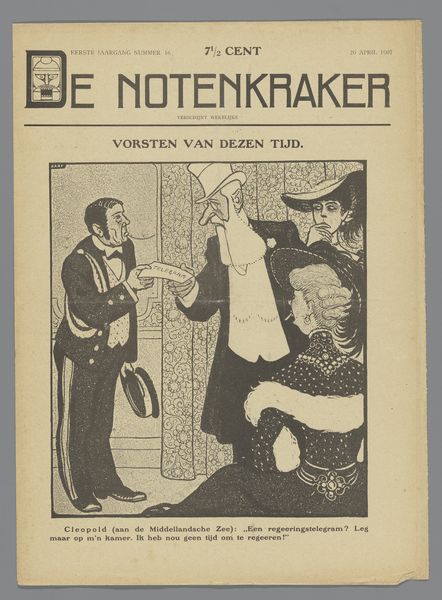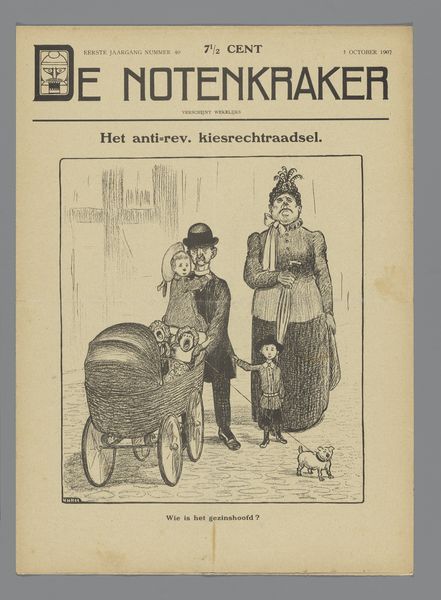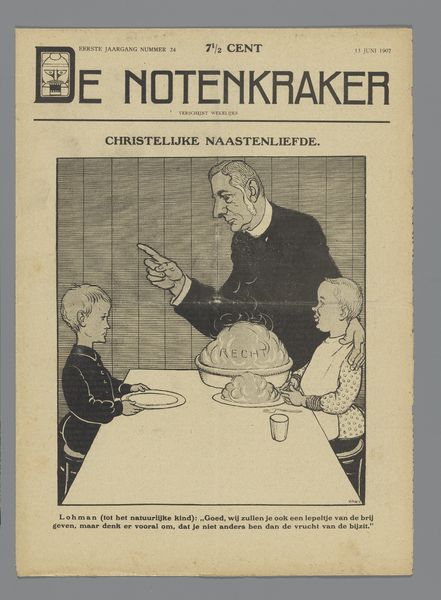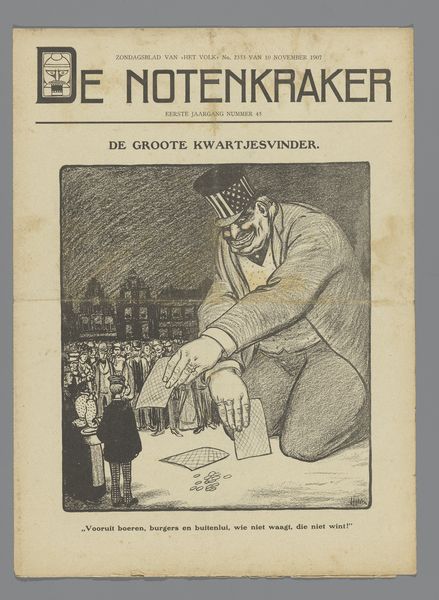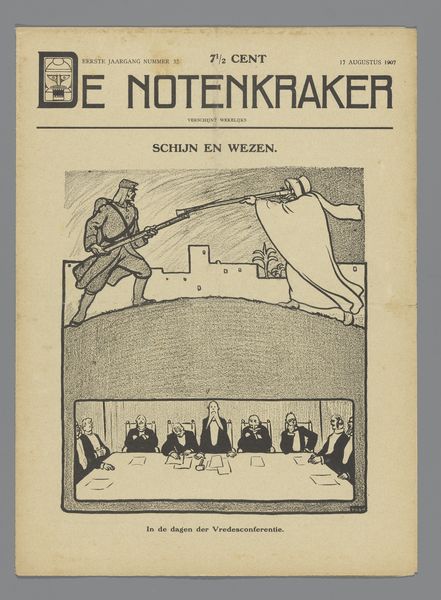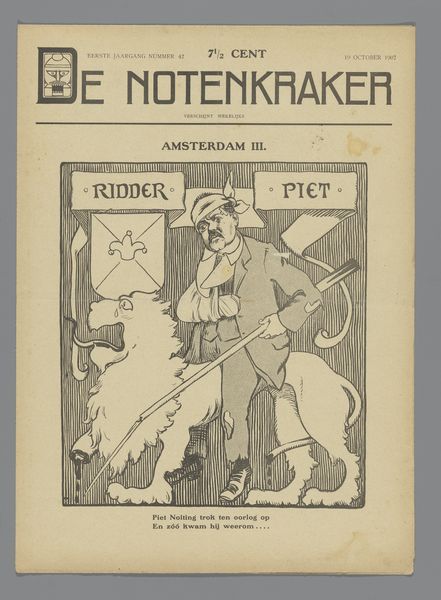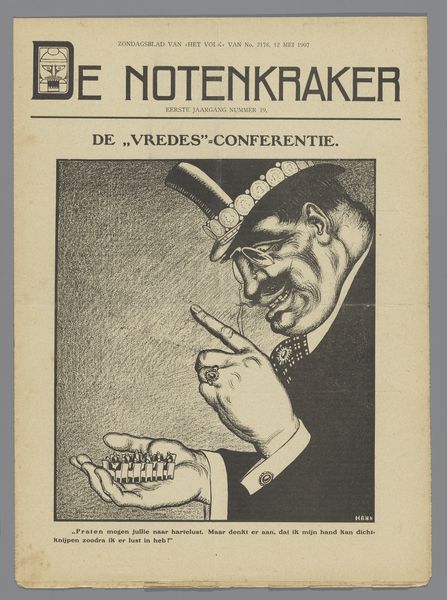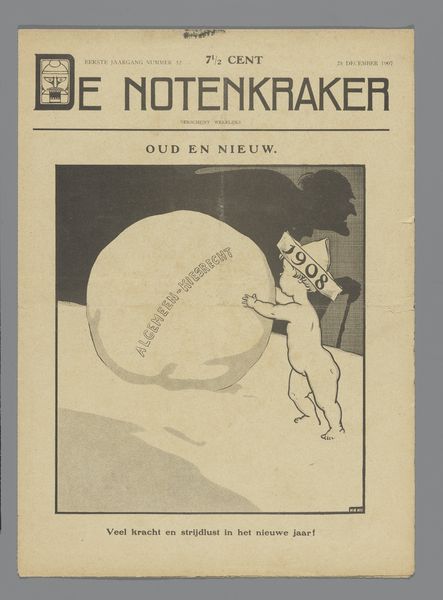
print, paper, ink
#
portrait
#
narrative-art
# print
#
caricature
#
paper
#
ink
#
cityscape
Dimensions: height 348 mm, width 252 mm
Copyright: Rijks Museum: Open Domain
Editor: This print, possibly from sometime between 1907 and 1912, is called "De Notenkraker, 12 oktober 1907 / Aan de hemelpoort," by Albert Hahn. It uses ink on paper. The scene at the pearly gates definitely strikes a satirical tone. What are some of the cultural currents that this work is tapping into? Curator: The image clearly utilizes caricature. I am particularly interested in the fact that it appeared in "De Notenkraker" ["The Nutcracker"]. This detail positions the work within a tradition of politically engaged satire in early 20th century Netherlands. What’s interesting to me is to understand who are these gentlemen at the gate, and why are they portrayed in this way? Editor: Well, their formal dress suggests a certain level of authority. The text at the bottom refers to a delegation seeking clarification on electoral law... Curator: Precisely. The print likely satirizes the political establishment and bureaucracy of the time. Hahn, known for his socialist leanings, frequently criticized societal inequalities through his art. This image, then, serves as a visual commentary on the perceived opacity or even absurdity of the political system. Do you think this work was successful in communicating a specific message? Editor: Absolutely. Even without the text, the exaggerated features and the overall composition convey a sense of skepticism. It suggests that accessing power, even divinely sanctioned power, is complex. It requires interpretation and negotiation. I hadn’t fully considered the socialist element when thinking about this artwork. Curator: Hahn's perspective really shines through when one considers the public role of art. These prints were readily available and fostered public discourse. Examining its reception among different socio-political groups would likely further illuminate the context in which the work existed.
Comments
No comments
Be the first to comment and join the conversation on the ultimate creative platform.
